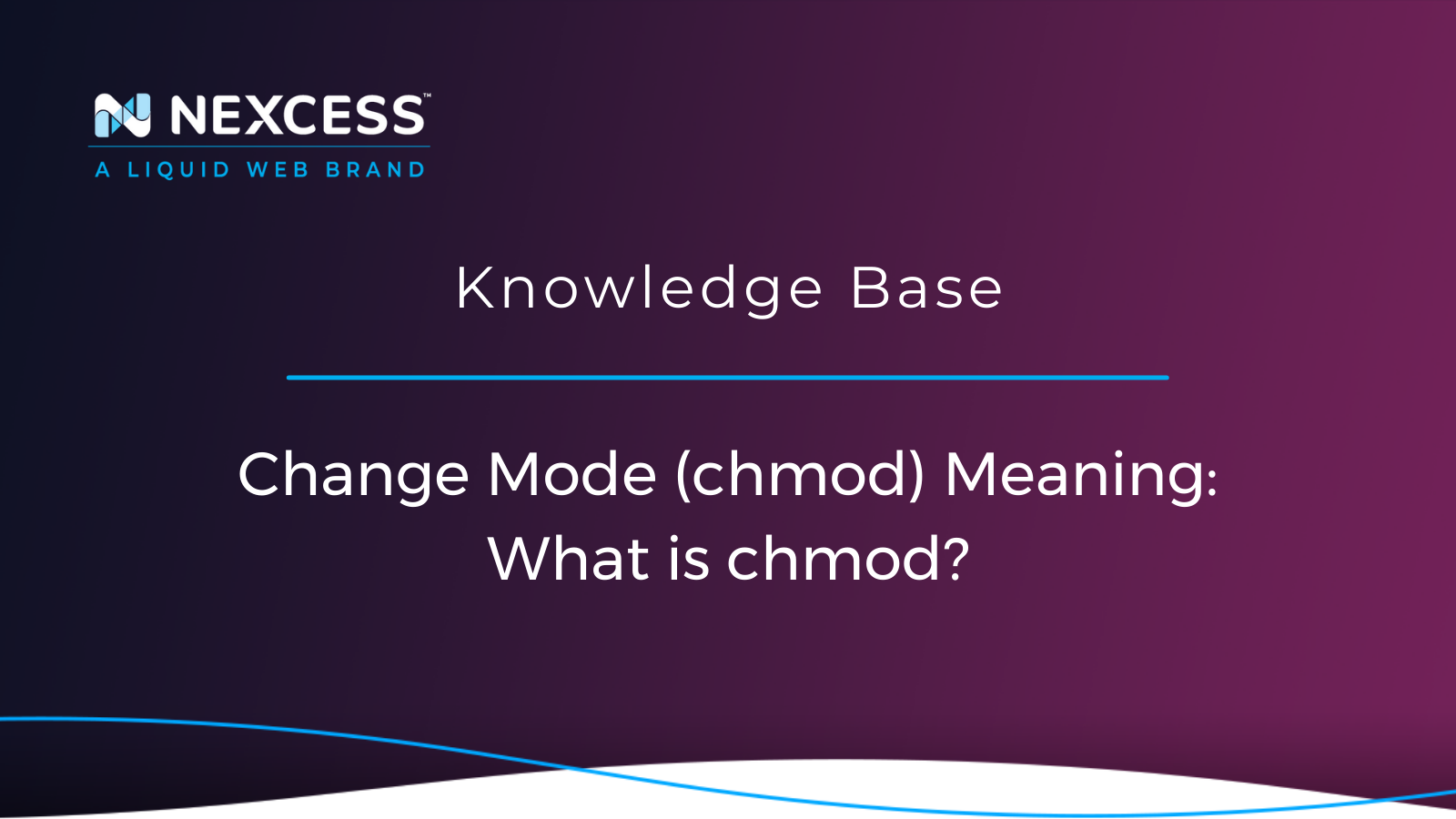What is chmod? In UNIX/Linux-based operating systems, chmod refers to change mode, a command for changing file access permissions.
Change Mode (chmod) Meaning & Purpose
The chmod, or change mode, command allows an administrator to set or modify a file’s permissions. Every UNIX/Linux file has an owner user and an owner group attached to it, and every file has permissions associated with it. The permissions are as follows: read, write, or execute.
Change Mode (chmod) Meaning & Application
UNIX/Linux systems have many users. In this context, a user may refer to an individual or a system operation. UNIX/Linux identifies each user with a UID, and users may be organized into groups.
Change Mode (chmod) Syntax & Mode Parameters
The syntax of the chmod command is:
chmod mode fileExample:
chmod 720 readme.txtEach number in the mode parameter represents the permissions for a user or group of users:
- The first number represents the file’s owner.
- The second number represents the file’s group.
- The third number represents everyone else.
The Change Mode (chmod) Meaning & Mode Parameters Reference Table below shows the eight numbers that can be used within the chmod parameter. The rwx column specifies read, write, and execute access, offering a binary value for each operation. A "1" means "yes," a "0" means "no." If rwx reads 110, then that permission may read and write, but not execute.
Change Mode (chmod) Meaning & Mode Parameters Reference Table
| # | Permission | rwx |
| 0 | none | 000 |
| 1 | execute only | 001 |
| 2 | write only | 010 |
| 3 | write and execute | 011 |
| 4 | read only | 100 |
| 5 | read and execute | 101 |
| 6 | read and write | 110 |
| 7 | read, write, and execute | 111 |
For example, if you set your directory permissions to 720, then your permissions would function as follows:
- The file’s owner may read, write, and execute the file.
- The file’s group may only write the file.
- All others cannot access the file.
Not a Nexcess Customer Yet?
Check out our fully managed hosting solutions to get started today.



